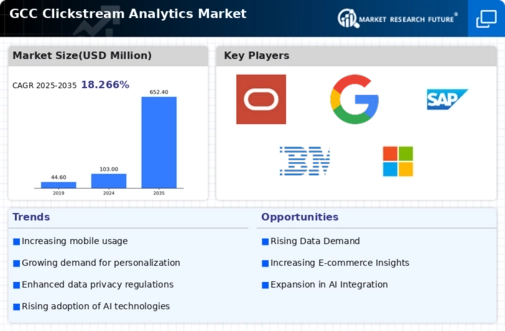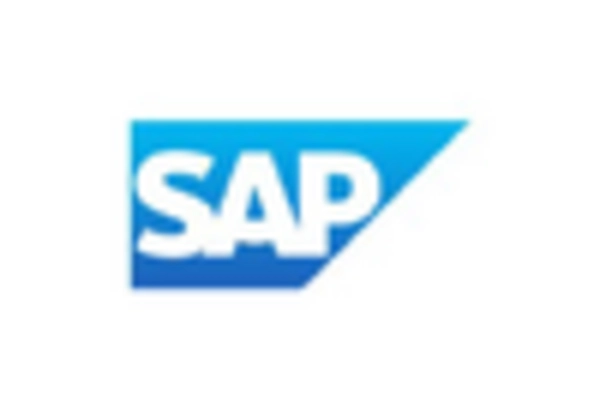Growth of E-commerce Platforms
The rapid expansion of e-commerce platforms in the GCC is significantly influencing the clickstream analytics market. With online shopping becoming a preferred choice for consumers, businesses are increasingly utilizing clickstream analytics to track user interactions and optimize their online presence. The e-commerce sector in the GCC is expected to reach a valuation of $30 billion by 2026, highlighting the potential for clickstream analytics to enhance user experience and conversion rates. This growth is prompting companies to invest in analytics tools that provide actionable insights, thereby driving the clickstream analytics market forward.
Integration of Advanced Analytics Tools
The integration of advanced analytics tools into business operations is a key driver for the clickstream analytics market. Organizations in the GCC are adopting sophisticated analytics solutions to gain deeper insights into customer journeys and behaviors. This trend is supported by the increasing availability of cloud-based analytics platforms, which offer scalability and flexibility. As businesses seek to enhance their decision-making processes, the clickstream analytics market is likely to benefit from this shift towards more comprehensive analytics capabilities. The market is projected to grow by 20% annually as companies prioritize data-driven strategies.
Rising Demand for Personalized Marketing
The clickstream analytics market is experiencing a surge in demand for personalized marketing strategies. Businesses in the GCC are increasingly leveraging clickstream data to understand consumer behavior and preferences. This data-driven approach allows companies to tailor their marketing efforts, enhancing customer engagement and satisfaction. According to recent estimates, the market for personalized marketing in the region is projected to grow at a CAGR of 15% over the next five years. As organizations recognize the value of targeted advertising, the clickstream analytics market is likely to expand, providing insights that drive effective marketing campaigns.
Regulatory Compliance and Data Governance
The clickstream analytics market is being shaped by an increasing focus on regulatory compliance. Data governance in the GCC is also a significant factor. As data privacy regulations become more stringent, businesses are compelled to adopt analytics solutions that ensure compliance while still providing valuable insights. This trend is likely to drive demand for clickstream analytics tools that incorporate robust data governance frameworks. Companies are investing in technologies that not only analyze user data but also adhere to legal standards, thereby fostering trust and transparency. The market is expected to grow as organizations prioritize compliance alongside analytics.
Emphasis on Customer Experience Optimization
In the GCC, there is a growing emphasis on optimizing customer experience, which is driving the clickstream analytics market. Companies are recognizing that understanding customer interactions through clickstream data can lead to improved service delivery and satisfaction. By analyzing user behavior, businesses can identify pain points and enhance their offerings. This focus on customer experience is expected to propel the clickstream analytics market, with a projected growth rate of 18% over the next few years. Organizations are increasingly investing in analytics solutions that provide real-time insights into customer preferences.

















Leave a Comment